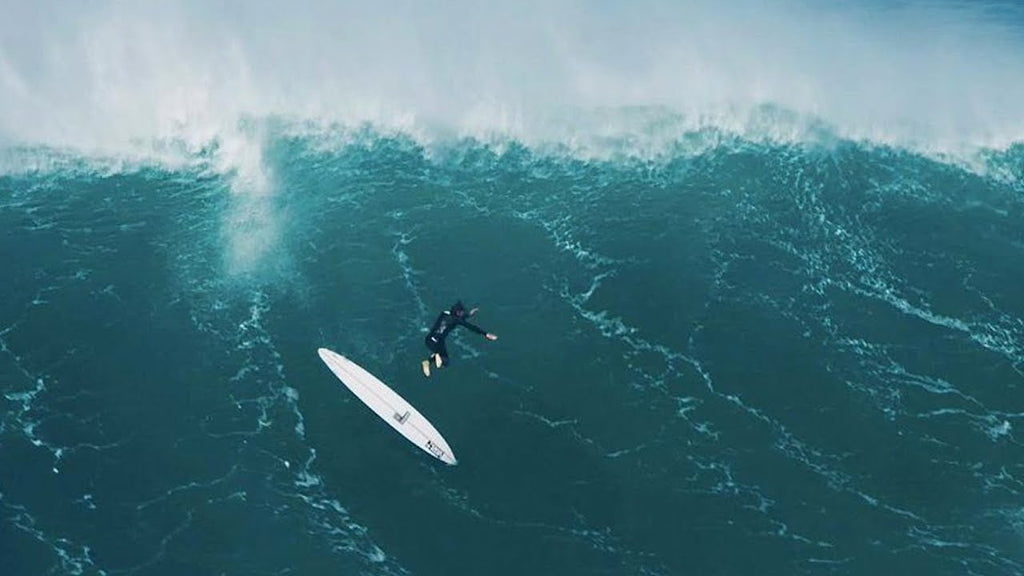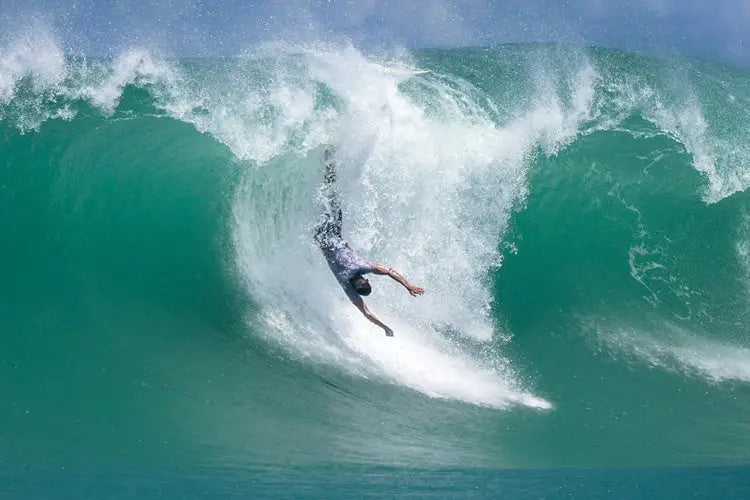Oct 30, 2021
How to Deal with a Wipeout
How to Deal with a Wipeout
The surf media spends a lot of time focusing on huge wipeouts in XXL waves—and for good reason. These wipeouts are dramatic and terrifying, and at times dangerous and life-threatening. But most people will never surf waves that large or experience wipeouts of that magnitude. Indeed, the majority of wipeouts that people take are in the under-triple-overhead range, yet they can still be stressful and even dangerous. This is why it is so important to learn how to wipeout properly and in the safest possible manner.

The first thing to keep in mind when wiping out is that you want to get as far away from your board as possible. Surfboards are hard (often made of fiberglass) and have a number of sharp points, including fins and noses. These can cause serious injuries if you get hit by your board, and it is often difficult to control where the board goes while it is getting flung around by the whitewater. With closeout backside barrels in particular, it is important to jump away from your board to avoid any contact.
At the same time, you also want to remain aware of the bottom and how shallow it is. If you are surfing a deep-water wave, you probably won’t hit bottom. But shallower waves can be quite dangerous, even if the waves themselves are quite small. When falling, take note of how close the bottom is, and land flat if necessary to avoid penetrating deep into the water.

Another way to avoid hitting bottom is to use small micro-movements with your hands while you are getting worked. Kicking with your feet while underwater at shallow reef waves is dangerous, as you are likely to kick the reef and get injured. Instead, do small strokes with your hands by your sides to help keep yourself from going too deep under water and striking the reef.
If you do find yourself on the bottom, take stock of what you are standing on. If it’s sand, you can probably just push off and swim to the surface. If it’s reef, on the other hand, you may want to avoid pushing down hard with your feet, as doing so could embed coral or sea urchins deeper into your skin.
As if hitting the bottom weren’t enough to think about, you are also dealing with a lack of oxygen while taking a wipeout. Fortunately, in waves that are less than triple-overhead, you are very unlikely to be held down for longer than 15 seconds—and anyone can survive a 15-second hold down, even if they get the wind knocked out of them when they fall. While it might feel like you have been underwater for eternity, that is likely because of the stressful nature of the situation. Instead of freaking out, relax and start to consciously count the seconds you are underwater. By becoming more aware of how long you have been down, you will realize that the hold down is actually quite short and you are not in any major danger, and this will enable you to relax.
When you start to come up from your wipeout, remember to keep your arms above your head. This will keep you from accidentally getting hit in the head or face by your board and also protect you in case another surfer on the next wave is riding toward you and doesn’t see you. Once you break the surface, take a quick breath of air, look around and take stock of your situation to see if there are any other surfers, rocks, or waves to avoid, then jump back on your board and paddle out for more fun!
